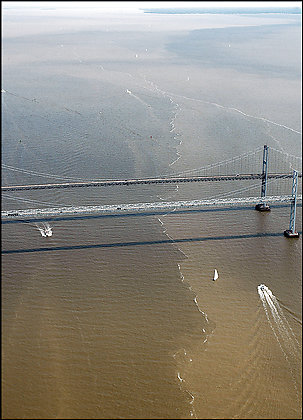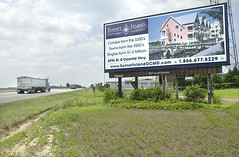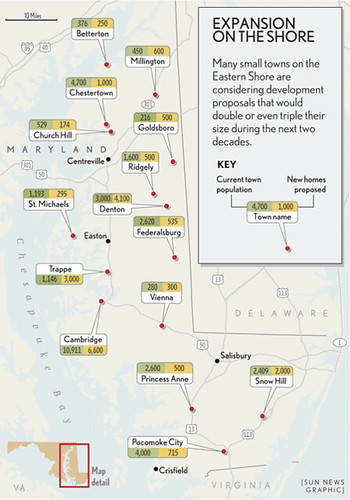Sprawl is all
This article from Business 2.0, "The next real estate boom" subtitled "Dense settlements, not sprawling ranch houses, are the future of housing - and could make for a smart real-estate investment," is about "smart growth" in outer suburban and exurban areas. From the article:
"New Villages," as community planner Robert McIntyre dubs them in the latest issue of The Futurist magazine, are compact, pleasantly urban settlements located well away from city centers. They share some of the charms and amenities of cities, thanks to their density, but have the mostly rural surroundings that originally drew people out to the suburbs, as well as the friendly feel of a small town where you know your neighbors.
Why I think the article is interesting is not that it is a way to whitewash terrible land use and degradation of the environment, but that it demonstrates that people are willing and eager to live in "urban-like" dense environments.
So what the question is, using the positive deviance technique, is what is it about greenfield new urbanism that is attractive to people, whereas extant old urbanism, such as in the center cities, is not?
Frankly, I think the answer is pretty obvious: public safety is high; public schools if not great, at least function well; the area is probably of middle- to upper-income, so people don't worry too much about living near people not like them, or with significant social services demands; etc.
So cities need to work on producing well-functioning municipal institutions.On the urbanists e-list there has been some debate over the book The Future Once Happened Here, which many consider an anti-liberal polemic. I merely consider the book thought-provoking and one more tome I can learn from.
I am not an "environmentalist" in the way of hardcore members of the Sierra Club. I mean, I care about the environment and I appreciate beauty, but for the most part I focus on city issues. Yet, great cities that draw in residents, and serve them efficiently, help preserve the environment, by reducing sprawl and the growing of subdivisions instead of crops, provided that this is done in a sustainable and environmentally-sound fashion.
The Baltimore Sun, in a number of pieces about the development of the Eastern Shore, make this link very clear. (It's another reason to support urban growth boundaries.)
 Photo by Jane Thomas, University of Maryland Center for Environmental Science. Multiple sediment-laden plumes of water converge around the Bay Bridge following the recent deluge of rain in the Chesapeake Bay watershed.
Photo by Jane Thomas, University of Maryland Center for Environmental Science. Multiple sediment-laden plumes of water converge around the Bay Bridge following the recent deluge of rain in the Chesapeake Bay watershed.This photo is from an article in the Post, in the sports section, by Angus Phillips, "Storms Leave the Bay Cloudy, With the Future No Brighter," but if this doesn't demonstrate the importance of sound runoff systems, the need for green roofs, etc., I don't know what does.
Dan Rodricks, a Sun columnist, wrote about development on the Eastern Shore, "More is not necessarily better for the Shore," which discusses how local elected officials believe that development is their due, and necessary for the financial viability of their communities. Yet there is no question that the changes are damaging.
 A sign on U.S. 50 advertises new homes, including single-family homes for $1.3 million. Residents of Annapolis, Washington and Baltimore are moving to the Eastern Shore and commuting. (Sun photo by Jed Kirschbaum)Jun 7, 2006
A sign on U.S. 50 advertises new homes, including single-family homes for $1.3 million. Residents of Annapolis, Washington and Baltimore are moving to the Eastern Shore and commuting. (Sun photo by Jed Kirschbaum)Jun 7, 2006 Baltimore Sun graphic.
Baltimore Sun graphic.Greenfield development can be terribly damaging, whether it is New Urbanist "smarter sprawl" or the typical automobile-centric development. Also see, from the Sun:
-- Photo gallery Developers head for the Eastern Shore
-- Primed for growth: Developers want to build thousands of homes on the Shore. But is the area ready? (Jul 2, 2006)
-- A regional approach to growth: Maryland's Eastern Shore is home to 59 municipalities, each with its own government and growth priorities. But in some states, many small towns have worked together to plan as a region - an approach conservationists say Maryland should try. (Jul 2, 2006)
Index Keywords: sprawl; urban-revitalization



0 Comments:
Post a Comment
<< Home